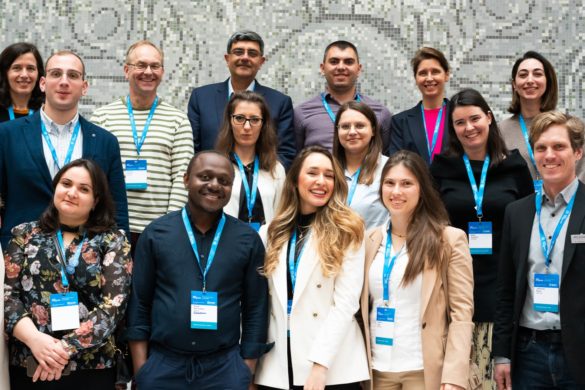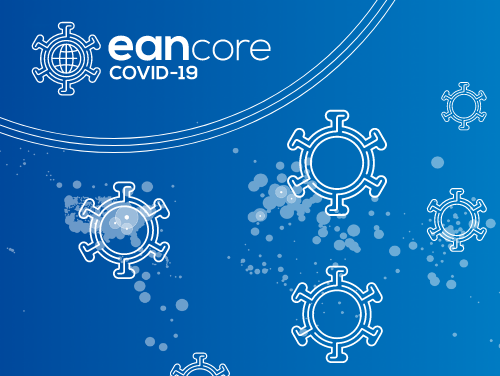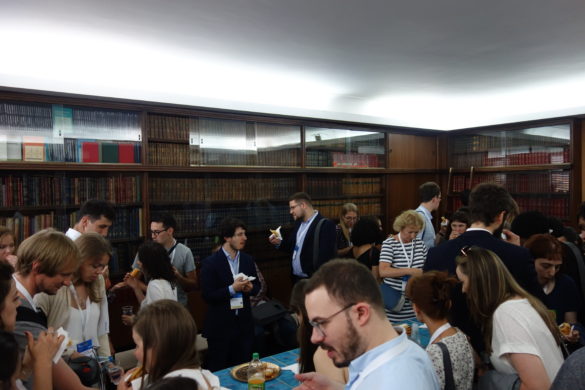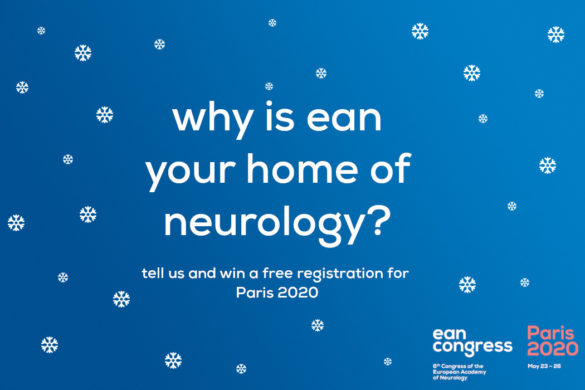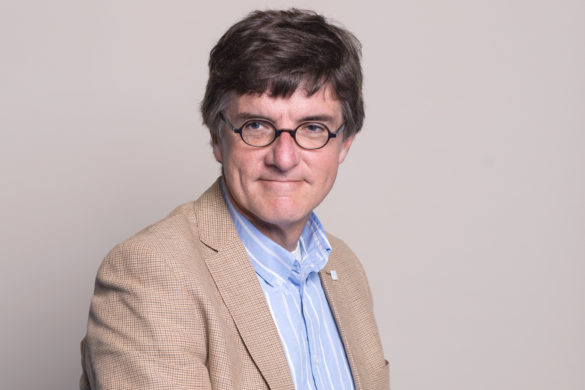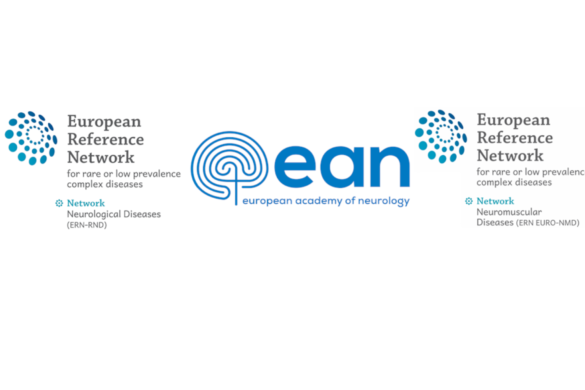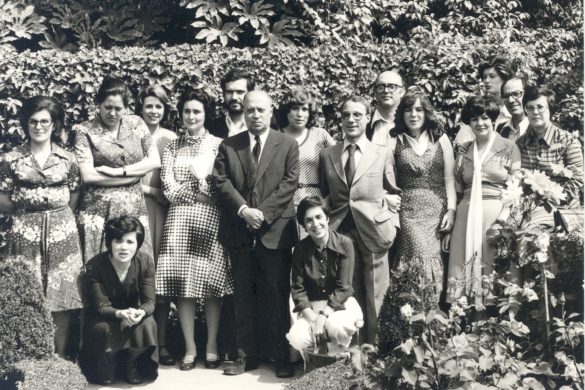by Mélisande Rouger
The amount of data available in neurology, neuroscience, neurobiology and related disciplines is rising exponentially and challenging clinicians’ ability to analyse and use that data, a panel of experts showed in the Plenary Session Using data science to transition to an era of precision health on day three of EAN 2023.
“Data available range from routinely collected clinical data and population health data, through genomics and other omics and to clinical diagnostics – i.e. MRI and neurophysiology,” said Prof. Maria J. Molnar from Budapest, Hungary, who co-chaired the session with Charlotte Cordonnier from Lille, France.
Insights from genomics
Prof. Nicholas Wood, research director of the UCL Institute of Genetics and Galton Professor of Genetics from London, UK, kickstarted the session by talking about the difference between personalised medicine and precision medicine.
“I want to give you a taste of where the excitement is going from the genomic point of view,” he said. “We have found a lot of genes over the last ten years […] A genetic test is now cheaper than an MRI scan and extremely fast.”
Wood shared an example of how rapid sequencing-based diagnosis of thiamine metabolism dysfunction syndrome helped make diagnosis and decide treatment for a paediatric patient in less than 24 hours.
“It took longer to get the drug to pharmacy than to get the whole genome sequencing,” he said.
Gene therapy also already helps in the management of spinal muscular atrophy. “There are many more applications for gene therapies in neurological disorders,” he said.
With precision and personalised medicine, the question essentially revolves around whether clinicians can use biological or genomic insights to design and drive therapies and biomarkers.
Huge strides have been made in this regard, but there are still a number of bottlenecks to break through, he says.
“We have to think about the problems we have with genomic science,” he said. “One is that we are using very white European based data. There’s a clinical and moral impact. We are not thinking about the other populations. We should sequence genotypes all around the world across different groups to try to enrich the data.”
The future will be ‘omic delivered’ healthcare – through transcriptomics, proteomics, metabolomics, etc. – and the integration of these data will be key.
“It is going to be algorithm-based and I think we will see a lot of activity in artificial intelligence,” he said.
Alzheimer’s disease and dementia
Prof. Gunhild Waldemar, professor of clinical neurology and chair of the Danish Dementia Research Centre at the department of neurology at Rigshospitalet, University of Copenhagen, Denmark, explored data driven care for patients with neurodegenerative disorders in the second presentation.
“With a stark increase in its prevalence, dementia has become a public health issue,” she said.
Over the past 20 years, DALYs (disability-adjusted life years) or years of full health lost to Alzheimer’s disease and dementia have increased by 122%, according to data published by the WHO in 2021.
There are a number of challenges and unmet needs in the management of neurodegenerative dementia disorders, according to Waldemar.
“The diagnostic rate of these chronic disorders with slow progression is low. Many still go unnoticed, and most are detected years after onset of first symptoms,” she said. “We need a much earlier diagnosis, and precision in both diagnosis and prognosis.”
While those disorders still do not have a cure, their prevalence will continue to increase steeply in the future. At the same time, healthcare systems are under pressure to do more work with fewer resources.
Not everything is dark, though. “There is evidence for modifiable risk factors,” she said. “Therefore, personalised prevention would be very interesting.”
Artificial Intelligence could help better predict and manage the risk for a patient to develop dementia, in order to minimise the impact of the disease on life quality.
Studies are ongoing to try and unleash the potential of the technology in dementia care. For example, PROMINENT, a pan-European project, plans to establish a digital platform for diagnosis and treatment of neurodegenerative diseases. The COGNO-SPEAK study aims to enable patients to speak with physicians using speech therapy and machine learning to extract patterns of a person’s speech and correlate the data with dementia or functional memory disorder.
“With the right tools, patients could subscribe to a personalised health programme that determines their risk profiles based on lifestyle and genetic factors, generates a personalised prevention programme that tracks their activities and evolution, and issues the appropriate recommendations,” she said.
Stroke and rare diseases
Prof. Cordonnier, a professor of neurology and head of the department of neurology and stroke centre at the Lille University Hospital, then spoke of multi-modal data approaches to predict clinical outcomes after stroke.
“We have to combine different types of data – from medical imaging, demographics, biology medical imaging data and clinical assessment – and observe how they interact with each other to predict clinical outcomes after stroke,” she said.
Clinicians already combine different data every day when they assess outcome after stroke, for example with the ICH score. But there are limitations to human decision-making capacities, Cordonnier insisted.
“It is challenging to be able to integrate and generate prediction modelling, due to data heterogeneity and the different semantics of all these variables,” she said.
Machine learning-fed algorithms could enhance the ability to capture a broader range of stroke-related factors and their interactions, leading to more robust predictive models, she showed in her lecture.
Last but not least, Prof. Molnar, a professor of neurology and former vice-rector for Scientific Affairs at Semmelweis University in Budapest, spoke of developing and implementing decision support systems for the diagnosis and treatment of rare neurological disorders.
“Ai is particularly significant in rare diseases, where human cognitive distortions such as heuristic, anchoring or recall bias are still pretty strong,” she said.
However there are specific issues to tackle when training algorithms to recognise rare diseases, such as ensuring that there is a large amount of high quality and genetically diverse data, on top of the main obstacles still faced in AI development: data integration and interoperability.





